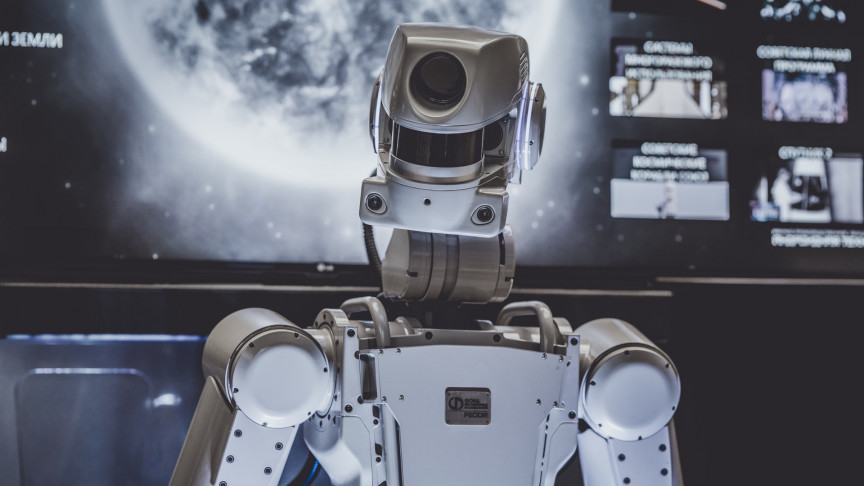
interestingengineering.com
AI 101: All The Ways AI Could Make or Break the Future
Advances in AI are beginning to revolutionize the world we live in. Learn why that could be a very good or very bad thing.
Science & Tech
In December 2017, AlphaZero, a chess-playing, artificial intelligence (AI) developed by Google, defeated Stockfish 8, the reigning world champion program at that time. AlphaZero calculates around 80,000 moves per second, according to The Guardian. Stockfish? 70 million.
Yet, out of 100 matches, AlphaZero won 28 and tied 72.
Stockfish’s open-source algorithm has been continually tweaked by human input over the years. The New Yorker reports that coders suggest an idea to update the algorithm, and the two versions are then pitted against each other for thousands of matches to see which comes out on top.
Google claims that AlphaZero’s machine learning algorithm had no human input beyond the programming of the basic rules of chess. This is a type of deep learning, wherein programs carry out complex tasks without human intervention or oversight. After being taught the basics of the game, AlphaZero was then set free to teach itself how to get better.
So, how quickly was the AI able to develop its algorithm well enough to beat one of the most advanced chess programs in the world?
Four hours.
It wasn’t just the speed with which it machine-learned its way to chess mastery that amazed people, either. It was AlphaZero’s, for lack of a better word, creativity. Writing in The Atlantic, historian Yuval Noah Harari, author of Sapiens: A Brief History of Mankind and Homo Deus: A Brief History of Tomorrow, notes that some of AlphaZero’s strategies could even be described as genius.
Everything about AlphaZero is indicative of how fast and how acute the AI revolution is likely to be. Programs like this will essentially be doing the same kind of information processing our brains do except better — far better — with a breadth and depth that no biological system (including the human brain) could ever hope to compete with.
Debates about consciousness and free-will aside, these programs will undoubtedly possess intelligence by at least some definition of the word. Unconstrained by biology and with a human-like ability to learn and course-correct, the potential for change is so large that it may be impossible to comprehend, let alone predict.
Yet, we do have some ideas about where we may end up.
But to truly understand what that final finish line may look like, we first need to understand what artificial intelligence really is.
How to define artificial intelligence
What is artificial intelligence? There is no single, universally-accepted definition of AI, meaning it can be easy to get lost in the philosophical and technical woods while trying to outline it. There are, however, a few key points that researchers agree are relevant to any definition.
The Stanford Encyclopedia of Philosophy notes that many scientists and philosophers have attempted to define AI through the concept of rationality, expressed in either machine thinking or behavior. A 2019 report released by the European Commission describes the basics of how AI programming achieves that rationality through perceiving the environment, interpreting the information found within it, and then deciding on the best course of action for a particular goal, potentially altering the environment in the process.
Experts at IBM and the Massachusetts Institute of Technology (MIT) founded the MIT-IBM Watson AI Lab in 2017 and offer useful perspectives on how to think of the technology. The lab’s name may be familiar to you; Watson was the program that beat out two human competitors to win on the game show Jeopardy back in 2011. The lab defines AI as enabling “computers and machines to mimic the perception, learning, problem-solving, and decision-making capabilities of the human mind.” This is an umbrella definition that does an excellent job of encapsulating the basic idea.
Importantly, the lab then distinguishes between three AI categories. "Narrow AI" is composed of algorithms that perform specific tasks at a daunting speed. Narrow AI encompasses much of the AI technologies in existence today — voice assistance technology, translation services, and those chess programs mentioned above are all examples of this type of AI.
The Watson AI Lab aims to take AI two critical steps further. First to "broad AI", which is programming systems that are able to learn with greater flexibility. And eventually to "artificial general intelligence," which are “systems capable of complex reasoning and full autonomy.”
This last category would be something akin to the archetypal sci-fi version of autonomous machines.
Read more:
https://interestingengineering.com/ai-101-all-the-ways-ai-could-improve-or-end-our-world
























































